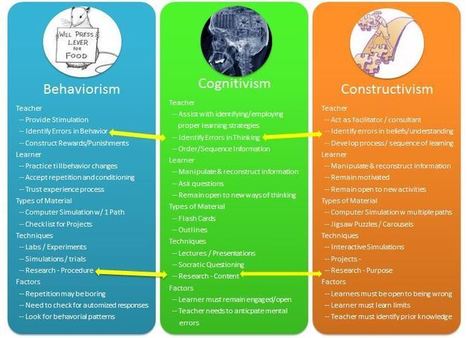Via Beth Dichter
Research and publish the best content.
Get Started for FREE
Sign up with Facebook Sign up with X
I don't have a Facebook or a X account
Already have an account: Login
 Your new post is loading... Your new post is loading...
 Your new post is loading... Your new post is loading...
|
Sharaya Baltimore's curator insight,
September 20, 2016 12:29 PM
I like that it gives a comparison of behaviorism, cognitism and constructivism (even though we aren't looking at that school) and it also gives information about the teachers, learner and techniques, etc.
Susmita Dhungel's curator insight,
September 14, 2017 12:03 PM
This article explains the differences between behaviorism, cognitivism, and constructivism. It shows differences in each school's teachers, learners, types of materials, techniques, and factors. 
Krystal Robles's curator insight,
September 21, 2017 11:54 AM
I don't get as to why they all can share these things. The arrows indicate that the things relate to each other.
|











I like that it gives a comparison of behaviorism, cognitism and constructivism (even though we aren't looking at that school) and it also gives information about the teachers, learner and techniques, etc.
This article explains the differences between behaviorism, cognitivism, and constructivism. It shows differences in each school's teachers, learners, types of materials, techniques, and factors.